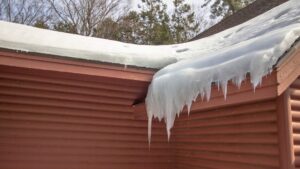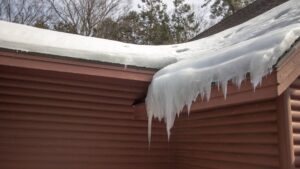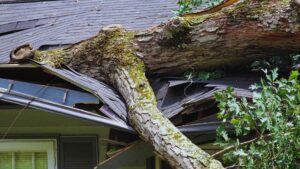
Michigan winters are as beautiful as they are brutal. Between heavy snowfalls, freezing rain, and frigid winds, homeowners often face one of the most common

Spring is finally here, and as the snow melts away, it’s time to assess how your roof held up through the harsh winter months. Freezing temperatures, heavy snowfall, and ice buildup can take a toll on your roof, leading to potential issues that need to be addressed before they worsen. Regular spring roofing maintenance can help extend the lifespan of your roof, prevent costly repairs, and ensure your home stays protected throughout the warmer months.
Use this comprehensive spring roofing maintenance checklist to inspect, repair, and prepare your roof for the season ahead.
Winter storms, freezing temperatures, and ice dams can weaken your roof’s integrity. A thorough visual inspection is the first step in spring roofing maintenance. Look for:
Leaks and water damage can go unnoticed until they become major problems. Inspect both the exterior and interior of your home for signs of water infiltration. Look for:
If you notice any of these signs, schedule a professional inspection to determine the source of the leak and prevent further damage.
Your gutters and downspouts play a crucial role in directing water away from your roof and foundation. Winter debris, including leaves, twigs, and ice buildup, can clog gutters and cause water backup. Clean your gutters thoroughly and ensure they are securely attached to your home. Also, check downspouts for blockages and confirm that they direct water at least a few feet away from your foundation.
Branches, leaves, and other debris can accumulate on your roof over the winter, trapping moisture and accelerating wear and tear. Use a roof rake or hire a professional to remove debris safely. Avoid walking on your roof unless you have the proper safety equipment and experience.
Proper attic ventilation and insulation are key to preventing moisture buildup and regulating temperature extremes that can damage your roof. Check for:
Spring is a great time to trim back any tree branches hanging over your roof. Overgrown branches can scrape against your shingles during windy conditions and drop leaves and twigs that clog your gutters. They can also provide easy access for pests like squirrels and raccoons looking for shelter.
While a DIY inspection is beneficial, a professional roofing contractor has the expertise to identify hidden issues that might go unnoticed. A professional inspection can:
Regular inspections can help extend the lifespan of your roof and provide peace of mind as you enter the rainy spring season.
If your inspection uncovers any damage, don’t delay repairs. Even small issues can lead to bigger problems if left unattended. Promptly repairing missing shingles, sealing leaks, and reinforcing weak spots will help prevent further damage and costly repairs down the road.
If your roof is aging but still in relatively good condition, applying a protective roof coating can enhance its durability. Roof coatings provide an extra layer of defense against UV rays, moisture, and temperature fluctuations. This can be particularly beneficial for flat or metal roofing systems.
Spring often brings heavy rains, strong winds, and even hailstorms. Ensure your roof is ready for severe weather by:
If a severe storm hits, inspect your roof afterward for any signs of damage and address them as soon as possible.
If your roof is more than 20 years old, it may be time to consider a replacement. Aging roofs are more prone to leaks, mold growth, and structural issues. A professional roofing contractor can assess whether repairs will suffice or if a replacement is a more cost-effective long-term solution.
If a roof replacement is on your horizon, spring is an excellent time to explore energy-efficient options. Modern roofing materials, such as cool roofs and reflective shingles, can help reduce heat absorption and lower cooling costs in the summer. Additionally, some energy-efficient roofing systems may qualify for tax credits or rebates.
Spring is the perfect time to prioritize roofing maintenance after a harsh winter. By following this spring roofing maintenance checklist, you can identify potential problems early, prevent costly repairs, and ensure your home stays protected throughout the year. Whether you choose to handle minor maintenance tasks yourself or call in a professional, taking care of your roof now will pay off in the long run.
If you’re unsure about the condition of your roof, contact a trusted roofing contractor for a thorough inspection. Investing in preventive maintenance today can save you from major headaches and expenses down the road. Don’t wait—get your roof spring-ready today!

Michigan winters are as beautiful as they are brutal. Between heavy snowfalls, freezing rain, and frigid winds, homeowners often face one of the most common

When it comes to choosing the right roofing material for your home, Michigan homeowners have unique needs. With heavy snowfalls, icy conditions, and harsh seasonal

Michigan winters are known for their heavy snowfalls, freezing temperatures, and unpredictable storms. While the snowy landscape may look beautiful, the weight of snow and

Michigan’s Fall Storms and Your Roof As the leaves begin to turn and temperatures drop across Michigan, fall storms roll in with unpredictable force—bringing high
"*" indicates required fields

Take advantage of our free inspection and free second opinion offer and receive a complimentary estimate for any new installation service.
